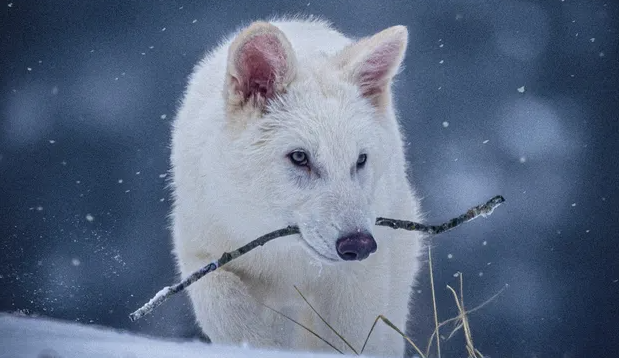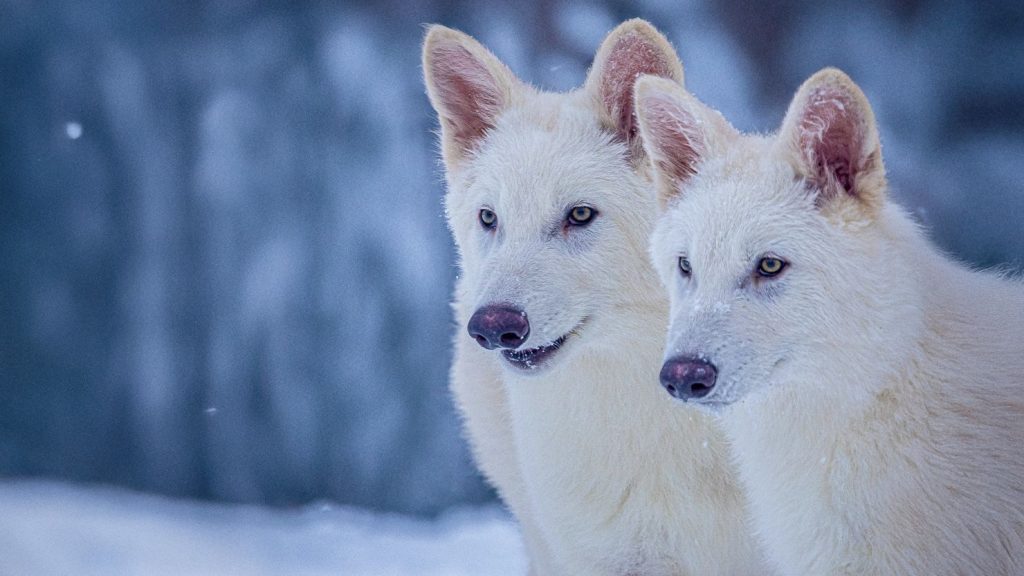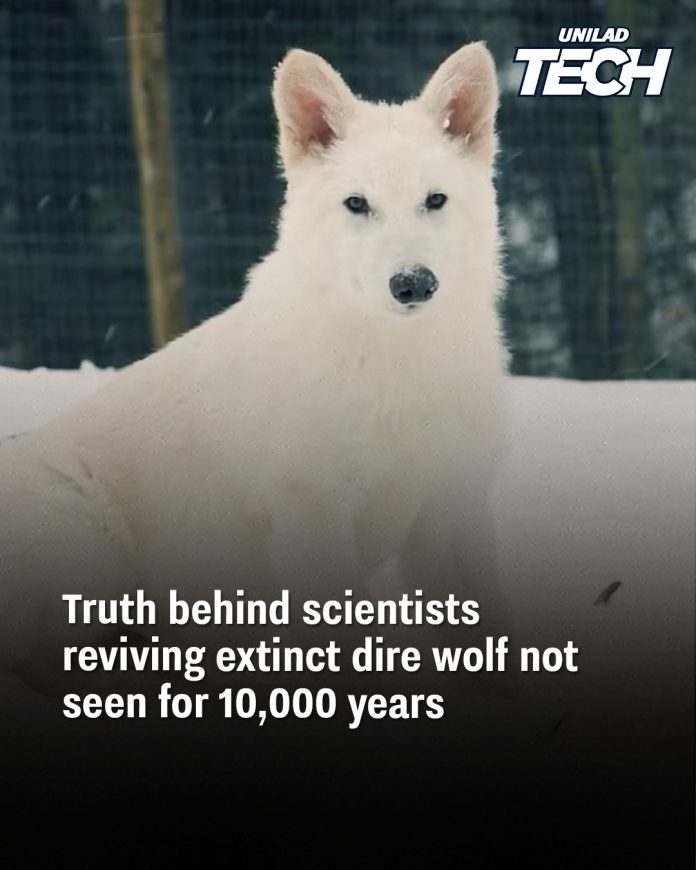In a groundbreaking scientific achievement, Colossal Biosciences, a U.S.-based biotechnology company, has successfully brought back the dire wolf (Aenocyon dirus), a species that roamed North and South America during the Pleistocene epoch and went extinct approximately 10,000 years ago. This remarkable feat involved advanced genetic techniques, resulting in the birth of three healthy dire wolf pups named Romulus, Remus, and Khaleesi.
The Dire Wolf: An Icon of Prehistoric Fauna
Dire wolves first appeared around 2.6 million years ago and became extinct between 10,000 to 13,000 years ago. They gained contemporary fame through popular culture, notably in the television series “Game of Thrones” and various video games. Unlike their fictional counterparts, real dire wolves were formidable predators, similar in size to the largest modern gray wolves but with more robust builds and stronger bites, adaptations suited for hunting large herbivores such as horses, giant sloths, mastodons, and ancient bison.

The Genetic Resurrection Process
The journey to resurrect the dire wolf began with the extraction of DNA from two ancient specimens: a 13,000-year-old tooth found in Sheridan Pit, Ohio, and a 72,000-year-old ear bone discovered in American Falls, Idaho. These samples provided the genetic blueprint necessary for the de-extinction process.
Scientists compared the dire wolf genomes to those of their closest living relatives, gray wolves (Canis lupus), identifying 20 key genetic differences across 14 genes. These genes influenced critical traits such as the dire wolf’s larger size, broader head, white coat coloration, and distinctive vocalizations.
To replicate these characteristics, researchers harvested endothelial progenitor cells (EPCs) from living gray wolves and employed CRISPR gene-editing technology to modify these cells to match the dire wolf’s genetic profile. This approach required meticulous editing, as certain genes expressed differently between species; for instance, genes responsible for the dire wolf’s light-colored coat could cause deafness or blindness in gray wolves if not correctly modified.
The modified nuclei were then inserted into enucleated ova (egg cells) from gray wolves, creating embryos that were implanted into surrogate domestic dogs. Out of 45 engineered ova, three embryos developed successfully, leading to the births of Romulus and Remus on October 1, 2024, and Khaleesi on January 30, 2025. All three pups were delivered via planned cesarean sections to minimize complications, and the surrogate mothers experienced no miscarriages or stillbirths throughout the process.
Current Status and Observations
The dire wolf pups are currently housed in a secure, undisclosed 2,000-acre ecological preserve in the United States. This facility includes a veterinary clinic, shelters for extreme weather, and natural dens, providing an environment that supports their development. Under continuous veterinary supervision, the wolves are fed a diet consisting of deer, beef, and horse meat, supplemented with organ meats and specialized nutritional additives to mimic their natural dietary needs.
By six months of age, Romulus and Remus each measured nearly four feet in length and weighed approximately 80 pounds, with projections to reach six feet in length and 150 pounds at full maturity. Khaleesi, at three months old, is developing similarly. The wolves exhibit physical traits characteristic of the extinct dire wolves, including larger body size, broader heads, and white coats. They also display natural wolf behaviors such as early howling, stalking, and a wariness around humans, maintaining distance even from their handlers.
Ethical Considerations and Future Implications
While this achievement marks a significant milestone in genetic engineering and conservation biology, it also raises important ethical and ecological questions. Some scientists argue that these animals are not true dire wolves but rather genetically modified gray wolves exhibiting dire wolf traits. Dr. Julie Meachen, a researcher specializing in canid evolution, expressed skepticism, suggesting that the resulting animals are “mostly gray wolf that looks like a dire wolf.”

Colossal Biosciences maintains that their work represents a transformative step in de-extinction efforts, with potential applications in conserving endangered species and restoring ecological balance. The company is also involved in projects aiming to revive other extinct species, such as the woolly mammoth, with the goal of reintroducing them to their natural habitats to fulfill ecological roles that have been vacant for millennia.
However, the reintroduction of extinct species into modern ecosystems must be approached with caution. Concerns include the potential for unforeseen ecological impacts, the welfare of the de-extincted animals, and the prioritization of resources that might otherwise be directed toward conserving currently endangered species. As such, ongoing dialogue among scientists, ethicists, and policymakers is essential to navigate the complex implications of de-extinction technologies.
In conclusion, the successful birth of dire wolf pups through advanced genetic techniques represents a remarkable scientific achievement, offering insights into evolutionary biology and the potential for de-extinction. While this development opens new avenues for conservation and ecological restoration, it also necessitates careful consideration of the ethical and environmental ramifications associated with bringing extinct species back to life.

















